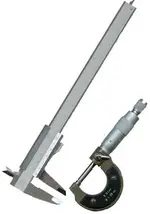Just tried the divider thing and its Excellent!....no wait thats montys line, ok it works great!

Could only find a few to measure, think the rest are in riker display cases somewhere in my messy room :P They measured 5/8" .5" and 3/8"

Some were impossible to measure because they were just blobs of lead slugs, in fact i have come to the conclusion that some were not even bullets, just blobs of lead

One in particular is neat because it looks as if it splashed when it was molten then hardened like that. Also i found alot of good sites for caliber and stuff

Heres one in particular that could help me out:
http://www.chuckhawks.com/caliber_conversions.htm Ugh im using math outside of school! whats wrong with me

LoL.
Sorry jim, my mom wont let me use the mail after what i did the last time i tried to mail something, ended up getting lost in canada or something

Sides i need to learn this so i dont have to mail you every bullet i dig up

But thanks for the very generous offer

Wonder if nana has ever tried to see what caliber her bullets are? then again that could take awhile

So according to that site and my measurements:
The "picket" or "sugarloaf" bullet i have is .50 Cal.
My Musketball is .625 inches but there isnt .625 on the chart so im guessing .62 caliber musketball like they used civil wr era?
Small little slug is .375" and is .375 Cal...wow thats obvious :P
Thanks for all the help guys and thanks for the great offer jim

by the way-does anyone know what these particular calibers were usually used for? I mean-.62 cal for hunting seems alil overkill? but then again back in the 1800's it prolly wasnt

 I have heard the pros use scales to weigh the bullet if it has impacted soemthing...how do you measure the circumference of a bullet to determine caliber? Iv got alot of old lead balls and stuff and i want to ID what caliber, type etc....
I have heard the pros use scales to weigh the bullet if it has impacted soemthing...how do you measure the circumference of a bullet to determine caliber? Iv got alot of old lead balls and stuff and i want to ID what caliber, type etc.... I have heard the pros use scales to weigh the bullet if it has impacted soemthing...how do you measure the circumference of a bullet to determine caliber? Iv got alot of old lead balls and stuff and i want to ID what caliber, type etc....
I have heard the pros use scales to weigh the bullet if it has impacted soemthing...how do you measure the circumference of a bullet to determine caliber? Iv got alot of old lead balls and stuff and i want to ID what caliber, type etc....


 Whats a micrometer? I could maybe afford that if its just a few bucks
Whats a micrometer? I could maybe afford that if its just a few bucks  I have a civil war collectibles book, but it doesnt go into details with the bullets.
I have a civil war collectibles book, but it doesnt go into details with the bullets.
 Is there a chart online that you can compare measurements to see what caliber/type it is?
Is there a chart online that you can compare measurements to see what caliber/type it is? Could only find a few to measure, think the rest are in riker display cases somewhere in my messy room :P They measured 5/8" .5" and 3/8"
Could only find a few to measure, think the rest are in riker display cases somewhere in my messy room :P They measured 5/8" .5" and 3/8"  One in particular is neat because it looks as if it splashed when it was molten then hardened like that. Also i found alot of good sites for caliber and stuff
One in particular is neat because it looks as if it splashed when it was molten then hardened like that. Also i found alot of good sites for caliber and stuff 
